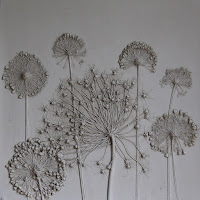http://sudestsicilia.it/en/places/caltagirone/staircase-santa-maria-del-monte
The peculiarity of the staircase is each step is decorated with different hand-decorated ceramic tile, using styles and figures derived from the millennial tradition of pottery making. Twice a year this staircase is used a backdrop for which images of patron saints and other local themes are illustrated using thousands of flowers or candles.
Between the month of May and June, the town celebrates La Scala Infiorata, the flower festival of Caltagirone. During this period the Staircase of Santa Maria del Monte is decorated with hundreds of potted plants artfully arranged to create beautiful geometric patterns that climb up the staircase. Then later in July, the Luminaria Festival is held in honor of the town's patron saint, San Giacomo, and the steps undergo yet another transformation. The staircase is illuminated with thousands of candles of different colors arranged in order to reconstruct an artistic drawing of several tens of meters.
The represented themes divide ideally the staircase in a dozen of sectors, in which figurative, geometric and floral elements representing different styles and different eras alternate: from the Arab-Norman to the Angevin-Aragonese one, from the Swabian to the Spanish one until chiara montana, passing through the inevitable baroque, the eighteenth and the contemporary nineteenth-century one.













